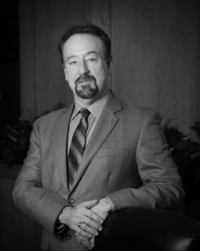 The Association of Central Oklahoma Governments (ACOG) has named Mark W. Sweeney, AICP, Executive Director of the regional planning organization. Sweeney arrives in the region with over 25 years of proven success in city and regional planning. He most recently served as Executive Director of the Shreveport-Caddo Metropolitan Planning Commission (MPC) in Louisiana.
The Association of Central Oklahoma Governments (ACOG) has named Mark W. Sweeney, AICP, Executive Director of the regional planning organization. Sweeney arrives in the region with over 25 years of proven success in city and regional planning. He most recently served as Executive Director of the Shreveport-Caddo Metropolitan Planning Commission (MPC) in Louisiana.
Frontline Experience, Federal
Sweeney, a native Texan, has frontline experience working with numerous federal agencies on major programs and projects, including, but not limited to U.S. Department of Transportation (USDOT), Housing and Urban Development (HUD), Economic Development Administration (EDA), Environmental Protection Agency (EPA) and the Department of Energy (DOE). Holding an American Institute of Certified Planners (AICP) certification, he gained extensive municipal and county government experience while directing regional planning services for two councils of governments in the Lone Star State. He served the East Texas Council of Governments (ETCOG), Kilgore, for 13 years, and the Capital Area Council of Governments (CAPCOG), Austin, for nearly five years.
Frontline Experience, Regional
While at ETCOG he led the East Texas region in innovative air quality solutions that helped ensure the area remains in attainment with stringent federal air quality standards. “Ozone pollution was a big challenge for our area,” Sweeney explained. “To reduce its economic and environmental impact, we put together a successful coalition of stakeholders known as the North East Texas Air Care (NETAC).
“We undertook many initiatives including working with the Texas Commission on Environmental Quality (TCEQ) along with funding from the Texas legislature to implement effective pollution reduction measures. As a result of our efforts, we became a model for regions identified as ‘near-non-attainment’.”
While at ETCOG, Sweeney was also involved in launching DOE’s Clean Cities program and also worked with EDA on significant regional economic development efforts including the creation of a popular, and now self-sustaining, revolving loan program. He is markedly poised to shepherd ACOG’s Central Oklahoma Clean Cities Coalition as well as advance the organization’s 2013, EDA designation as an economic development district.
While at CAPCOG, Sweeney assisted with bringing $3.7 million in new federal funding to the Austin region via HUD’s Sustainable Communities Regional Planning (SCRP) Grant Program.
“Through this program, we broke down silos and heightened conversations and collaborations among multiple government agencies to create growth and improve the quality of life for people in the CAPCOG region,” Sweeney said. “The program objective was to demonstrate an innovative smart growth model that integrates land use, workforce opportunities, housing choices and transportation mobility, while strategically maximizing return on public investments. We utilized the growth centers, designated by the Austin Metropolitan Planning Organization’s Transportation Plan, to provide funding through a competitive process to cities willing to undertake innovative demonstration projects.”
Major Accomplishments
One of Sweeney’s greatest challenges was also one of his greatest accomplishments. It was achieved while serving in his most recent position as Executive Director of the Shreveport-Caddo MPC. During his tenure, he and his team worked diligently to create a Unified Development Code (UDC).
The American Planning Association’s definition of a UDC or Unified Development Ordinance underscores the enormous undertaking. It defines it as:
“A local policy instrument that combines traditional zoning and subdivision regulations, along with other desired city regulations, such as design guidelines, sign regulations, and floodplain and stormwater management, into one document. By combining all of these regulations in a single document, a UDC is intended to streamline and coordinate the development process of permits and approvals for development projects by removing inconsistencies and eliminating outdated policies. The required permits, processes, and regulations for the development process are outlined in one place, making it easier for developers, the public, and public entities to understand the requirements. Along with the compiling of regulations and policies, UDCs use clear, consistent language and definitions, with many illustrations and tables, often in attractive, easy-to-read formats to further help stakeholders understand the regulations.”
“We were able to get this major task off the back burner and get it adopted by the city and the parish,” Sweeney shared. “Today, it represents the biggest change in development regulations for both jurisdictions in 60 years. We accomplished what no one thought could be done.”
New Challenges
In Central Oklahoma, Sweeney will face new challenges. He hopes to build upon more than two decades of career experience in an effort to take ACOG to the next level.
“I have a real passion for regionalism,” Sweeney said. “It’s my forte, and near and dear to my heart. There are so many problems that can be solved on a regional level. Through shared resources, energy, and even manpower, there are a lot of exciting things we can accomplish to make life better for all our citizens.”
Just days into his new job and he has already developed an impressive to-do list. Items include:
- Input and visioning sessions across the region
- Making the rounds throughout Central Oklahoma to meet with nearly 40 elected and/or appointed city and/or county officials
- Revising ACOG’s By-laws
- Gaining a keen understanding of ACOG’s staff and internal resources
Visioning
“The visioning and input sessions are especially critical,” Sweeney said. “They are paramount to understanding what the region wants to become and what services it wants ACOG to provide. The organization has been in existence since 1966, and the world has changed a lot. There are some new initiatives we can undertake that have been successful in other regions.”
“Innovative approaches and strategic planning are going to be key factors as well as identifying new funding sources. We must be open to new perspectives on how to manage regional issues.”
He went on to reveal an acute understanding of councils of governments (COGS), describing them as both giant clearinghouses for state and federal funding, and also being slightly akin to mini United Nations. “We confront mutual challenges and manage shared responsibilities,” he said. “Above all, we’re here to promote cooperation and collaboration; to be a neutral and objective place where people can exchange ideas.”
Goals
Sweeney, who holds a Bachelor’s degree in Urban Studies from the University of Tulsa, and a Master’s degree in City and Regional Planning from the University of Texas, Arlington, also discussed the success of other (COGs) across the nation. “I am a student of what others have done well,” he shared. “I like to learn from other regions and then think outside the box for customized regional solutions. I am always contemplating the cost/benefits analysis along with the short and long-term gains of new programs and projects.
Another goal that’s on the front burner is connecting with other COG leaders in Oklahoma and beyond, and becoming an active member of the National Association of Development Organizations (NADO) and the National Association of Regional Councils (NARC).
“ACOG, based on population, is the largest COG in Oklahoma,” Sweeney noted. “We should grow our presence in these organizations, and assist them with their goals in any way we can, particularly with legislative advocacy.”
Regarding working with ACOG’s existing staff, he hopes to inspire his new team to become part of something that makes a difference in the world.
“At the end of the day, we all want to believe we’ve made a difference,” he said. “I like my staff to feel like they are part of something bigger than themselves. I’m a good listener and I want to consider their thoughts and ideas on how we can make the region better.
“Change takes time, patience and strategic implementation.”
Red River Rivalry
Speaking of change, Sweeney began his new position August 31, trading Louisiana’s humid summer days just in time for the showy autumn and football pageantry for which Oklahoma is known. As a Native Texan, the ACOG Board of Directors has already ribbed him about the notorious Red River Rivalry.
“He’s from Texas, but we don’t hold that against him,” ACOG Board Chair Matt Dukes, Mayor, Midwest City, jested during a recent board meeting. “He is going to make an excellent Executive Director, and we already feel that he is one of us.”
In his new position, Sweeney will be responsible for directing the efforts of all ACOG divisions including Transportation and Planning Services, which manages the work of the Metropolitan Planning Organization (MPO) housed at ACOG; 9-1-1 ACOG; the Garber-Wellington Association and various environmental, economic and community development programs and projects.
Executive Director
Mark W. Sweeney, AICP
Executive Director
(405) 234-2264
